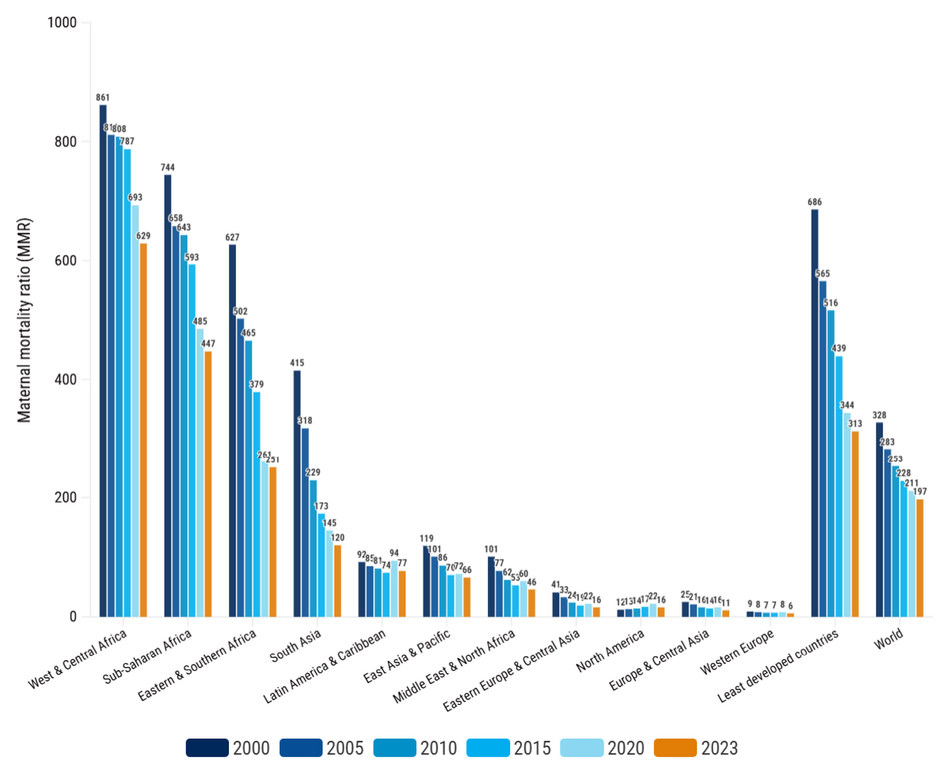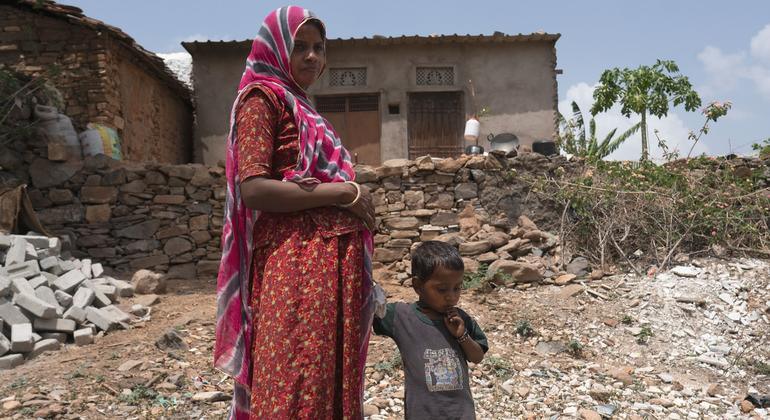In addition, unprecedented aid reductions have made global progress to end maternal risk deaths, United Nations agencies have warned in a new report that calls for larger investments in midwives and other health workers.
THE Maternal mortality trends The report was published by the UN Children’s Fund (UNICEF), the World Health Organization (WHO) and the UNFPA Sexual and Reproductive Health Agency, in the observation of the World Health Day on April 7.
This shows that maternal deaths decreased by 40% between 2000 and 2023, largely due to improving access to essential health services.
However, the pace of improvement has slowed considerably since 2016, and around 260,000 women died in 2023 due to complications during pregnancy and childbirth, or about a death every two minutes.
Mortal danger in Sudan
First -line health workers have long alarms on the dangers of conflicts.
In Sudan, the state of Al Jazirah, a midwife named Awatef told UNFPA that she helped four women to deliver babies while fleeing violence: “I delivered them in the bush, with only very basic sterilization – I only had water and soap.”
A woman, Amina, had to give birth by a cesarean – on the floor of the house of a foreigner where a local doctor helped deliveries – while listening to the drum of gunshots just outside. “I had to start walking around six hours later, carrying my baby while my injuries were still fresh and painful,” she said.
Urgent action required
While the financing of aid reduces countries to reduce vital services for maternal, newborn and child health, the United Nations agencies use urgent action to prevent maternal deaths, in particular in humanitarian circles where figures are already alarming.
“Although this report shows glimmer of hope, data also highlights how dangerous pregnancy is in a large part of the world today – despite the fact that there are solutions to prevent and treat complications that cause the vast majority of maternal deaths,” said Director General Tédros Adhanom Ghebreyesus.
“In addition to ensuring access to quality maternity care, it will be essential to strengthen the underlying health and reproductive rights of women and girls-factors that underlie their prospects for healthy results during pregnancy and beyond.”
Pregnancy and pandemic
The report also provides the first global account of the impact of the COVVI-19 pandemic on maternal survival.
It is estimated that 40,000 more women died due to pregnancy or delivery in 2021, going to 282,000 in 2022 and 322,000 the following year.
This increase was linked not only to the direct complications caused by the COVVI-19, but also to the generalized interruptions of maternity services, stressing the importance of ensuring that these care is available during pandemics and other emergencies.
Invest in midwives
“When a mother dies during pregnancy or childbirth, her baby’s life is also in danger. Too often, the two are lost for causes that we know how to prevent, “said UNICEF director Catherine Russell.
With global financing reductions putting more mothers in danger, especially in the most fragile contexts, “the world must urgently invest in midwives, community nurses and health workers to ensure that each mother and baby have the opportunity to survive and prosper,” she added.
Inequalities and retarders
The report also highlights persistent inequalities between regions and countries, as well as unequal progress.
Maternal mortality down around 40% between 2000 and 2023, sub -Saharan Africa carried out significant gains. It was also one of three regions of the UN to see significant drops after 2015, the others being Australia and New Zealand, and Central and South Asia.
However, sub -Saharan Africa still represented around 70% of the global burden on maternal deaths in 2023 due to high levels of poverty and multiple conflicts.
Meanwhile, five regions saw progress stagnating after 2015: North Africa and Western Asia, east and southeast Asia, Oceania (excluding Australia and New Zealand), Europe and North America, and Latin America and the Caribbean.
A midwife visiting pregnant women in a refuge for people displaced internally in Sudan.
A global responsibility
Dr. Natalia Kanem, Executive Director of UNFPA, argued that access to quality maternal health services is a right, not a privilege.
She underlined the urgent responsibility to build well-resourced health systems that protect the lives of pregnant women and newborns.
“By increasing the supply chains, the midwifery workforce and the disintegrated data necessary to identify the most at risk, we can and must end the tragedy of avoidable maternal deaths and their huge toll on families and societies,” she said.
Childbirth in crisis
The report also highlighted the fate of pregnant women living in humanitarian emergencies, which are faced with some of the highest risks in the world. Almost two thirds of global maternal deaths now occur in countries affected by fragility or conflicts.
Beyond the insurance of critical services during pregnancy, childbirth and the postnatal period, the report underlined the importance of efforts aimed at improving the overall health of women by improving access to family planning services, as well as the prevention of underlying health conditions which increase risks, such as anemia, malaria and non-communicable diseases.
In addition, it is also essential to ensure that girls remain in school and that they and women have knowledge and resources to protect their health.

Trends in the maternal mortality ratio (MMR) by region.




